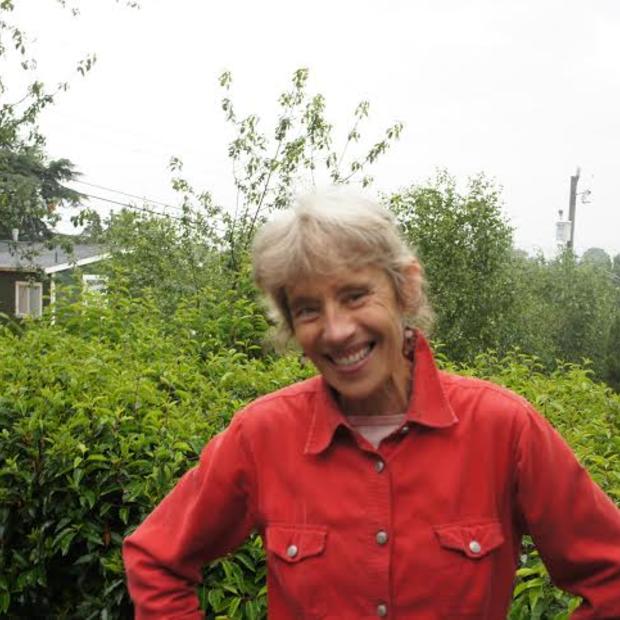Perhaps it’s the perceived vastness of the ocean and lack of visibility that has allowed society to dismiss the problem of plastic debris. Land-based discharges of plastic comprise the largest source of marine debris in oceans world wide – nearly 80 percent. The man who uncovered the dirty secret is on a mission to turn the tide.
Click on the audio player above or here to listen.
Captain Charles Moore found his true calling after a yacht race to Hawaii in 1997. On his return voyage to California he decided to take a short cut. It was the aftermath of the largest hurricane the Pacific had known. “Above where these hurricanes spawn it’s extremely calm, this North Pacific high, and this year that high extended for about a thousand miles in diameter.” It took him seven days to cross it. “During that time I couldn’t come on deck without seeing some chard of consumer plastic floating by.”
Moore decided to make a game out of it. How many times could he come on deck and not see any plastic? “But I would always, always lose. It was like I was going through this cookie crumb pathway like you read about in Hansel and Gretel but it was our trash.”
Two years later, having conducted chemical and bacterial monitoring with the Surfrider Foundation’s Blue Water Task Force, he did a scientific sampling. “When we analyzed those samples, six times as much plastic as zooplankton by weight was in our samples.” The study was published in Marine Pollution Bulletin. Captain Moore says it blew the lid on what’s now called the “Great Pacific Garbage Patch”. Which is not really a patch at all, but instead a sea of plastic soup distributed in water columns of oceans everywhere. “Since then it’s a campaign to wake people up to the fact that the Central Pacific and now we know other garbage patches and gyres are filling up with our persistent floating plastic trash.”
On tour with his recent book, Plastic Ocean, Moore is committed to stopping the flow of plastic into the ocean. In travels from Indonesia to Southern California he’s seen rivers covered with more plastic than water. Less than 10 percent of the plastics are getting recycled. “It doesn’t matter whether you’re near Los ;Angeles International Airport or whether you’re in Mumbai,India, you get the same look, the same kind of trash.”
Plastics are in everything, says Moore, water bottles, computers, clothing, cars, carpets, building materials. Sixty years ago, industry found a way to polymerize excess gases from petroleum by creating what he describes as a very long and persistent molecule — plastic. It took a tremendous burden off the petroleum industry of what to do with excess gas, but ended up transferring the burden to the planet.
To make matters worse, thousands of toxic additives are added to plastic to make it smooth or sticky or flame retardant. When the additives reach the environment, oil loving plastic becomes a sponge for other pollutants, pesticides and herbicides. The pollutants stick to the polymer matrix of plastic, explains Moore, and absorb up to a million times the level of the surrounding seawater.
And because there is now six times more plastic in the oceans than zooplankton, plastic is ingested by marine life. “How much of these toxins are getting transferred to these creatures that are mistaking plastic for food?” The question needs an answer, says Moore. Studies are underway in Japan but more research needs to be done to understand how many toxic additives humans are exposed to when they consume seafood.
A few years ago, Moore teamed up with the Dutch band, PB2 to make the video, “Plastic Soup”. It's lyrics include: “The Garbage Patch is made of waste it suffocates the sea.”
Moore says, “Our throwaway society has gone global and it’s now penetrating markets that before only used biodegradable packaging.” He notes that individuals can take action by deciding to opt out of a throwaway life style and follow the first of the famous three Rs: reduce. “The solution really has to be at the highest level in which we make decisions about the direction of our society."
He believes local economies are part of the solution. The local food movement frowns on pesticides and rarely uses packaging, which is 55 percent of the total plastic load in oceans.
Couldn’t plastic be removed from the ocean? Impossible says Moore. Sand and waves reduce most of it to microscopic particles. Eventually the ocean will spit the plastic out, cover it in deep underwater canyons, or wash it onto a beach. “But it won’t accomplish a self-cleansing until we stop putting the material into the ocean.”
For more information go to Moore’s research foundation, algalita.org or plasticdebris.org.
Green Acre Radio is supported by the Human Links Foundation. Engineering by CJ Lazenby. Produced through the Jack Straw Foundation and KBCS.



